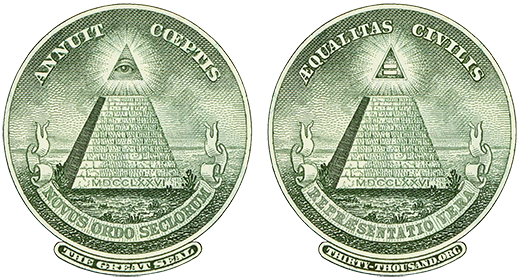Too Few Representatives for the Committees
House of Representatives Committee Analysis
As explained in Section Nine of this web pamphlet, it is clearly evident that we need a much larger pool of Representatives from which to choose in order to ensure that the committees’ essential work is done in a competent and timely manner. This section provides an analysis showing how severely undermanned the House of Representatives’ committees are.
Workload
Total Committee Assignments
This is an analysis of the committee assignments as of September 1, 2021, as per the House of Representative’s summary.1The House report, “List of Standing Committees and Select Committees and their Subcommittees of the House of Representatives of the United States together with Joint Committees of the Congress”, which has since been updated, was downloaded from https://clerk.house.gov/committee_info/scsoal.pdf
Per their report, the House has a total of 134 committees as follows:
| Committee type | Number | Assignments |
| Standing | 20 | 836 |
| Subcommittee | 104 | 1,667 |
| Select | 6 | 80 |
| Joint | 4 | 25 |
| Total | 134 | 2,608 |
For this analysis, the number of instances of House committee assignments were tallied. As shown in the table above, there were 2,608 such instances.
Number of Representatives Assigned to Committees
In this data set, there were 435 House members assigned to the committees. However, this may be a little misleading, as the composition of this 435 is not as one might expect for several reasons. First, there were only 432 voting Representatives, not 435, evidently due to three vacancies. Second, of those 432 voting Representatives, four did not have any committee assignments.2The four without assignments were Steny Hoyer, Kevin McCarthy, Nancy Pelosi, and Marjorie Taylor Greene. That left 428 voting Representatives who were assigned to committees. In addition, there were seven non-voting House members who were assigned to the committees. This brought the total up to the magical number of 435.
Distribution of Committee Assignments to House Members
Of the 2,608 instances of committee membership, 428 voting members comprise 2,564 of those, and seven non-voting members comprise 44. Therefore, each of the members of the House have, on average, the following number of committee assignments:
| Voting Members | Non-voting Members | Total | |
| Members on committees | 428 | 7 | 435 |
| Committee assignments | 2,564 | 44 | 2,608 |
| Average number | 6 | 6.3 | 6 |
The distribution of committee memberships is illustrated in the chart below for all 435 members who are assigned to committees. The graph shows, for example, that 97 members are assigned to six committees.
Note that the largest number of committee assignments held by any of the voting members is twelve, which are held by two members: Steve Cohen of Tennessee (Democrat) and Jamie Raskin of Maryland (Democrat).
The largest number of assignments for a non-voting member is nine, which are held by Jenniffer González-Colón of Peurto Rico (New Progressive).
Using the same data, the next chart indicates what percentage of the Representatives are assigned to any given number of committees or more. For example, 73% of the Representatives work on five or more committees.
According to the House of Representatives’ website, “Members are typically limited to service on two committees and four subcommittees, with exceptions for particular committees”3House.gov: House Committees (as of 04/03/2022) (emphasis added). That is a total of six House committees altogether, which would require a tremendous amount of time and effort for any one Representative to properly manage. Beyond that, there are “exceptions for particular committees”.
Because six is the average number of committees that House members are assigned to, that cannot be regarded as a typical limit, since 40% of the Representatives serve on seven or more committees and/or subcommittees. Those 40% must be the “exceptions” to which they are referring.
To illustrate how a single Representative can have numerous committee assignments, the example of Representative Steve Cohen is provided. As illustrated below, Mr. Cohen sits on three standing committees and nine subcommittees.
Committee Assignments by State
In the adjacent table, the states are sorted according to their total number of committee assignments from smallest to largest. This illustrates the extraordinary disparity in committee representation between the smaller and larger states, wherein the smallest states have as few as four committee assignments, and the largest one has 326.
Committee Assignments by Political Party
In a two-party system, the number of committee assignments are largely determined by whichever political party controls the House. Since the Democrat Party controls the 117th Congress, they have 28% more committee assignments than do the Republicans even though there were only 7% more Democrats than Republicans.4In the 117th Congress, there were 225 Democrats (including four Delegates), 210 Republicans (including one Delegate and the Resident Commissioner of Puerto Rico) according to the Membership of the 117th Congress: A Profile. The total number of committee assignments by political party is illustrated in the table below.
| Party Affiliation | Number of Representatives | Committee Assignments | |
| Number | % | ||
| Democrat Party | 224 (includes 4 non-voting) | 1,453 | 55.7% |
| Republican Party | 213 (includes 1 non-voting) | 1,139 | 43.7% |
| New Progressive | 1 (non-voting) | 9 | 0.3% |
| Independent | 1 (non-voting) | 7 | 0.3% |
| Total | 439 | 2,608 | 100% |
© Thirty-Thousand.org [Article Updated 04/03/22]
Explore More Topics:
- 1The House report, “List of Standing Committees and Select Committees and their Subcommittees of the House of Representatives of the United States together with Joint Committees of the Congress”, which has since been updated, was downloaded from https://clerk.house.gov/committee_info/scsoal.pdf
- 2The four without assignments were Steny Hoyer, Kevin McCarthy, Nancy Pelosi, and Marjorie Taylor Greene.
- 3House.gov: House Committees (as of 04/03/2022)
- 4In the 117th Congress, there were 225 Democrats (including four Delegates), 210 Republicans (including one Delegate and the Resident Commissioner of Puerto Rico) according to the Membership of the 117th Congress: A Profile.





